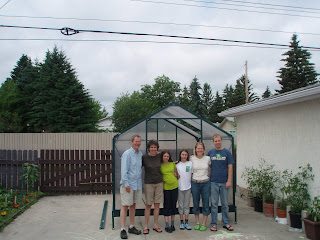We learned of permaculture for the first time from our friend, Teresa. Frankly, I am surprised that we did not learn about it sooner when we were living in Oregon for three years. The moment that we learned the basics of permaculture it just seemed to make sense and fit our goals perfectly. Organically growing your own food, designing your landscape so it needs minimum human input, and caring for the environment all at the same time resonated deeply with us.
Any time that there was a speaker giving a talk for low or no cost regarding permaculture, we went to listen. Rob from
Verge Permaculture and Adrian from
Big Sky Permaculture spoke often about breaking our dependance on industrial food systems, earth repair, building community, and supporting local economy. Every time we heard Rob and Adrain talk, we learned something new. One night in spring of 2010, at a talk by Adrian, he talked about the importance of planting cover crops and mulching your garden to retain moisture and nutrients in the soil. With this new knowledge, we planted a cover crop of field peas in the spring after the snow had melted.
As the cover crop grows, you should "chop and drop" the plant to release the nitrogen into the soil and provide biomass to the soil. We planted so many peas that were coming up all over the garden, that we had to chop quite frequently and some peas got a bit out of hand. From the tangled mass of peas that were growing up through the strawberry netting, we harvested lots of beautiful purple flowers, tendrils and peas which made an impressive salad for parties.
This year, we noticed a fair number of dandelions in the garden which indicates compacted soil. Knowing this, we planted daikon radish seeds for a cover crop this year instead of the peas. Sadly, the daikon greens are not nearly as tasty as the peas were though!
This just in from Verge!










































